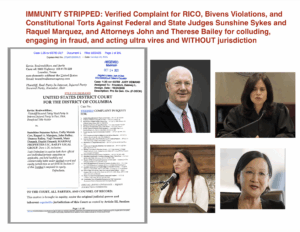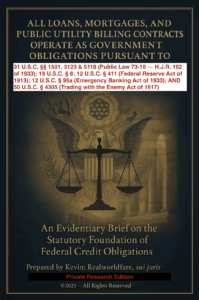In California, the creation and existence of a debtor and creditor relationship are governed by Law, statutes, and/or case law. It could be the Uniform Commercial Code, United States Code, California Civil Code, or Commercial Code, and depends on the situation, parties, and their respective location(s). These relationships are fundamental to the legal and financial system, impacting contracts, secured transactions, and obligations. Here, we will explore the key provisions from the California Civil Code and Commercial Code and how they define and regulate when such a relationship exists. It is important to note that statutes do not apply to everyone, as not every person is subject to the jurisdiction of the statutes (i.e., a sovereign/non-citizen national/private man or woman, etc.).
General Obligations in the California Civil Code:
The California Civil Code provides a foundation for understanding general obligations, which are essential to the debtor and creditor relationship.
Civil Code § 1427: This section defines an obligation as a legal duty by which a person is bound to do or not to do a certain thing. This is the cornerstone of any debtor-creditor relationship, as it establishes the requirement for one party (the debtor) to fulfill a duty owed to another party (the creditor).
Civil Code § 1428: An obligation can arise either from the operation of law or from a contract. This means that a debtor-creditor relationship can be established through statutory requirements or through agreements made between private parties.
Civil Code § 1429: When an obligation arises from a contract, the parties involved are referred to as the obligor (debtor) and the obligee (creditor). This section clarifies the roles within a contractual agreement, identifying the debtor as the party with a duty to perform and the creditor as the party entitled to receive the performance.
Defining Debtors and Creditors in the California Commercial Code:
The California Commercial Code provides more specific definitions and rules, particularly in the context of secured transactions, which are common scenarios where debtor and creditor relationships are established.
Commercial Code § 1201(b)(12): Defines a “debtor” as a person having an interest, other than a security interest or other lien, in the collateral, whether or not the person is an obligor. This broad definition encompasses any party with a stake in the collateral used to secure a loan or obligation.
Commercial Code § 1201(b)(13): Defines a “creditor” as a general term including a person to whom an obligation is owed. This includes anyone who is entitled to receive performance or repayment from the debtor.
Commercial Code § 9102(a)(28): Provides a more detailed definition of a “debtor” in the context of secured transactions. It includes any person with an interest in the collateral other than a security interest or lien, highlighting the importance of collateral in securing obligations.
Commercial Code § 9203: Discusses the attachment and enforceability of security interests, which are critical to establishing a debtor-creditor relationship in secured transactions. According to this section:
– A security interest attaches to collateral when it becomes enforceable against the debtor with respect to the collateral.
– A security interest is enforceable against the debtor and third parties only if specific conditions are met, including value being given, the debtor having rights in the collateral, and certain formalities being observed, such as the debtor authenticating a security agreement or the secured party taking possession or control of the collateral.
Other Relevant Statutes
Additional statutes provide context for debtor and creditor relationships, particularly in the context of legal judgments and claims.
California Code of Civil Procedure § 680.230: Defines a “debtor” as a person against whom a judgment is rendered or a person against whom a claim is made. This section is particularly relevant in legal proceedings where a party is determined to owe a debt based on a court’s decision.
California Code of Civil Procedure § 680.240: Defines a “creditor” as a person in whose favor a judgment is rendered or a person who is a claimant in respect to a claim. This establishes the role of the creditor in the context of judicial determinations and claims processes.
Conclusion
Understanding the creation and existence of debtor and creditor relationships in California involves examining key provisions of the Civil Code and Commercial Code. These statutes outline the nature of obligations, the roles of debtors and creditors, and the conditions under which these relationships are established and enforced. Whether through contractual agreements, secured transactions, or legal judgments, these legal frameworks ensure clarity and fairness in the interactions between debtors and creditors. However, it is essential to recognize that statutes do not apply to everyone, as not every person is subject to the jurisdiction of the statutes (i.e., a sovereign/non-citizen national/private man or woman).




